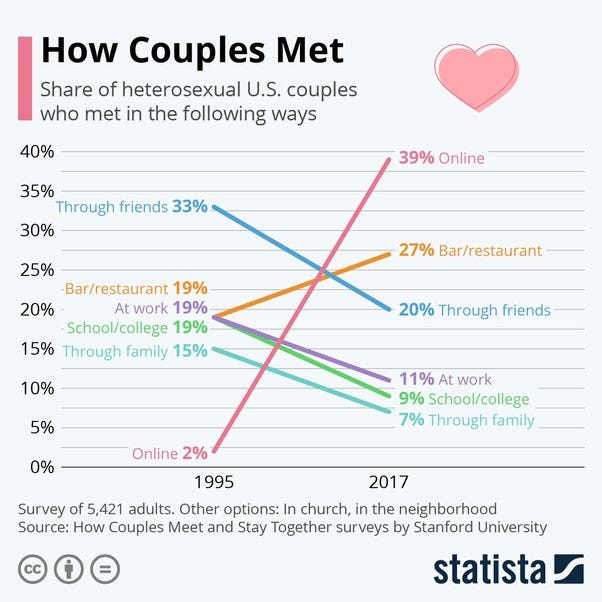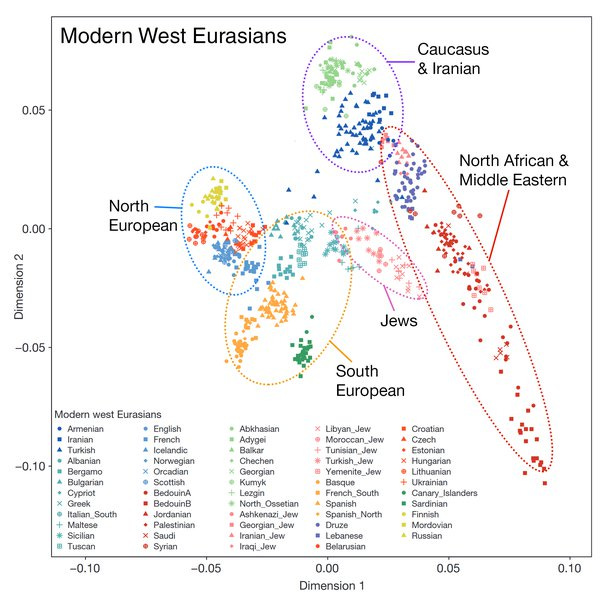When you look in the mirror, who do you see? Unless you are dysphoric, then you identify with the image reflected back at you. Even dysphoria itself requires some level of identification. “I don’t look the way I want to.” Who is this you, who looks one way or another?
Self-recognition, the ability to self-conceptualize, may be one of the most fundamental aspects of consciousness. To be conscious is to be aware of one’s self — your emotions, appearance, past and future. Eckhart Tolle describes consciousness as the awareness, the perceiver of the self.
Tolle would argue that consciousness, or Being, permeates everything. This is an idealist notion, that existence itself is synonymous with awareness. Without awareness, or perception, there can be no concept of existence. At the same time, Tolle separates the Ego, the story of one’s life, from the innermost Being, the present awareness of what is true in the Now.
Wayne Dyer describes three aspects of the Ego: what you have, what you do, and what people think about you. What you have is the least permanent: cars, houses, and money are all destructible and come and go throughout life. What you do is more lasting — your ability to run, to jump, to be the smartest, to be the best. However, everyone gets old, and whatever Olympic or intellectual ability you have now will eventually fade. The third category, what people think about you, is your reputation, and can go on after you die. This is your fame. Ancient gods and heroes were men who did things so great that their memory persisted through the mythology of the people. Yet even this is subject to forgetfulness, and withers in the sands of time.
Plato’s concept of the forms implies that behind the goodness of every hero, there is an ultimate good which manifests temporarily through him, to incarnate in the world. From this, Jung derives his concept of the archetype, yet culturally situations “the world of forms” within a particular “collective unconsciousness.” Jung believed that deep within the German people existed a “Wotan” archetype, which was then manifested through Hitler. This archetype was suppressed for thousands of years under Christianity, but with the decline of Christianity, it returned. Now it could be said that liberal democracy serves the purpose of Christianity. So long as the collective unconsciousness of the German people exists, this archetype has the potential to instantiate once again in the world.
Identity, then, can be viewed as fundamentally mythological and archetypal. Starting with mundane concepts: I am a man, and I am young. The concept of the man and the concept of youth are ideas. According to Locke, if these ideas are complex, they can be broken down into simple ideas, which are based absolutely in sense perception. The concept of a man and of a youth are, like even the most basic sensory perceptions, also part of dyad or spectrum. Just as hot is opposed by cold, and tall is opposed by short, so too is man opposed by woman, and youth is opposed by age.
The most fundamental idea of identity, as put forth by Carl Schmitt, is that of friend and enemy, or us and them. “Us” is the positive identity, while “them” is the negation which exists in order to define “us.” In the same way that there can be no hot without cold, there also cannot be any concept of positive identity without a contrasting concept of negative identity.
Those who are the most ethnocentric — who love their own people — are also the most xenophobic — who hate others. But we should consider if there is an exception to this rule. What about some tribe of the Caucasus mountains, almost entirely separated from the rest of humanity?
Such an isolated tribe loves itself. It loves its traditional dances, its particular language, its history, its poets, its traditional dress, its hairstyles, its customs, its architecture, its songs, its cuisine. If you were to take such a tradition, self-loving Caucasian and plop them down into a rural American gas station, they would miss home, but is this really “xenophobic?” Can’t someone love themselves, and not hate others?
The misidentification here is between familiarity, or similarity, and identity. A self-loving Caucasian loves a particular language, history, poetry, dress, style, custom, architecture, music, and cuisine because it is comfortable, familiar, nostalgic, and normal. This love of normalcy and regularity, of doing things “the old-fashioned way” can be abstracted as the love of dogma — the love of particular doctrines, the need to force everyone to think a particular way, to repeat certain beliefs or phrases. This is a distinct phenomenon from ethnocentrism.
The distinction here is between natural identity and identification by custom. Natural identity is shared by animals of many species, first and foremost, in sociality and, above all, reproduction. Dogs mate with dogs, cats with cats, birds with birds. Although interspecies copulation occurs, it is not prohibited by any learned system of morality.
Form and Identification
While autotrophs produce their own energy, heterotrophs must obtain it from outside themselves. From basic bacteria to human beings, heterotrophs must be able to distinguish edible and digestible material from inorganic or toxic material. The failure to distinguish, by sense perception, between useful, useless, and harmful, is the most basic duty of all living things which must eat to survive, as well as all living things which must reproduce to survive.
One exception in sexuality is that of the orgiast. Orgiastic animals and plants emit their sperm (or pollen) into their air or water at random, and winds, currents, or pollinators carry this sperm to the egg. In the case of plants which utilize pollinators, such as bees, they have outsourced the identification of form.
If the physical form is correctly identified according to instinct, it will activate and stimulate a physical process within the animal. The sexual organs enlarge mechanically to prepare for copulation. Animals are attracted to tasty food, and they are also attracted to one another sexually. In plants, there is no in-born function of attraction. Plants are autotrophic, but they are, at the very least, attracted to the sun. Plants do have a capacity for movement via phototropism.
The plant’s attraction to the sun is a form of heterophilia. Plants are attracted, not toward members of their own species, but toward their own species. Sexually reproducing organisms are autophilic, meaning that they are attracted to their own form — that of a fish, a dog, a cat, or a bear. Still, a beautiful flower becomes attractive to a bee, and thus the principle of “sexual attraction” persists even among plant life, even though it is outsourced to an entirely different species.
Humans are not alone in our “ethnocentrism.” Ethnocentrism is merely one very specific form of autophilia. All social species, and all sexual species, are attracted to members of their own species. They form flocks, tribes, and mating pairs. Some animals mate for life, some mate for a brief moment. Many animals take care of their young, expending energy to provide their young with food.
Even among R-selective species like spiders, whose eggs explode into thousands of baby spiders with no parental investment, we can still consider the process of pregnancy as a form of parental care. The female spider, after becoming pregnant, must expend energy to provide for the growth of the spider fetuses within her body. This is the case with all sexually reproducing organisms: all pregnant females must sacrifice some of their own energy in order to give birth.
In this way, all sexually reproducing species are both autophilic and maternally altruistic. We all are attracted to members of our own species, at least sexually if not socially, and our females all sacrifice their own energy for their children, even if only during pregnancy. If the instinct for autophilia was disrupted, then animals would copulate at random — with rocks, trees, and other species — and never successfully reproduce. If the process of maternal sacrifice is disrupted (by the starvation of the mother, for example) then reproduction cannot occur.
Both altruism (maternal investment) and autophilia exist in all animal species which become pregnant or lay eggs. Although animals may not always love their young after their birth (as in the case of spiders), they do always sacrifice for their young prior to birth. All animals naturally prefer members of their own species, and are sexually aroused by members of their own species. Social animals engage in a host of autophilic behaviors beyond mere sex and reproduction.
Wolves hunt together, birds fly together, deer raise their tails to signal danger. Mother birds bring their babies food. The nipples of a cow swell up with milk so that the babies can feed. Social animals are cooperative. Wolves, birds, deer, and cows will all be altruistic toward one another, even in the absence of any other groups.
At the same time, most complex social animals are inherently xenophobic. A flock of geese act socially and altruistically, but do not try to pet a wild goose. Bears are social, but when they see a human, their fight or flight response is activated. Deer are comfortable around one another, but the presence of alien species causes them to freeze. Some deer, generally peaceful, are even known to attack when their young are threatened.
The dodo bird, famously, had no natural predators, and thus no fight or flight response to human hunters. As a result, the bird was hunted to extinction. Prior to its death at the hands of hunters, the dodo bird was social. In this way, it can be seen that social behavior is not necessarily dependent on xenophobia, but that xenophobia is a rational survival strategy of most species, due to the possibility of predation. At the very least, with regard to sexual reproduction, it is necessary that species are xeno-apathetic. Xeno-apathy means that an animal may not be hostile to members of another species, but his sexual instinct is not at all activated by their presence.
Various species have developed complex signals, shibboleth, to prove to one another that they are card-carrying members of a certain race. The feathers of a peacock are clear to see, but more esoteric signals exist which humans cannot perceive: pheromones, undetectable by human scent, communicate from one animal to another its affiliation of species, its physical health, and its ability and willingness to mate.
Whether or not humans can identify pheromones, perhaps unconsciously, is a scientific mystery. The vomeronasal organ, which is the primary organ responsible for pheromone detection in animals, is present in 73% of humans, but the corresponding bundle of nerves, which would connect this organ to the brain, seems to be missing from humans.1 Still, there are some pheromones which can be detected by the olfactory organ alone:
[Androstadienone] is present at much higher concentrations in male sweat and can be detected by women, albeit with wide variation in sensitivity. Upper-lip application of [..] androstadienone in women results in improved mood and heightened focus - particularly to capture emotional information. A positive mood is known to facilitate women’s sexual response, and increased focus improves sexual satisfaction. Indeed, some studies showed a beneficial effect of androstadienone on sexual desire and arousal. However, these effects were dependent on the context of the experiment, for example, on the presence of a male attendant.2
Of course, humans do not rely on smell alone for autophilic identification. In an age of dating apps, a plurality of sex acts now occur from online introductions. These online introductions occur with very limited sensory information: a few pictures or videos, plus a text-based description. A percentage of online daters may also require a phone call or voice message to determine their level of attraction.
Like animals, humans engage in mating rituals and dances to determine mate suitability. The tactile coordination of dancing could be considered a form of tactile or vestibular perception, beyond mere visual perception. Vestibular perception refers to a sense of balance. If a partner can move rapidly, in a coordinated fashion, during a dance, this indicates that they have a good sense of balance, and can be felt almost immediately through tactile sensation. Furthermore, women often find a man with strong arms or hands to be attractive — if a man demonstrates his grip strength, or she can feel his muscles bulge, this is a form of tactile selection.
Additionally, before engaging in sex, 87% of participants engage in kissing, which involves both the sense of taste as well as tactile awareness. If the kiss is awkward (tactile) or the kiss tastes bad (gustatory), this can be grounds for disqualification.
While visual perception can be considered, first and foremost, the primary sense of sexual selection, other senses, such as the vestibular (sense of balance), tactile (feeling of muscular hardness), olfactory (smell), gustatory (taste of kiss), auditory (sound of voice) all play a role in sexual selection.
All of these forms of sexual identification could also influence social identification. However, given that there are greater evolutionary risks to inter-species copulation than inter-species socialization, we should expect that social identification is less sensory than sexual identification. This is proven by the example of inter-species adoption. While pigs and tigers are not known to copulate across species, they are known to socialize across species, especially in captivity.
There are many different ways to look at the influence of physical characteristics on the sexual preferences of humans, however, it is clear that this is not the dominant or even the primary factor in mate selection. For instance, black men have almost no difference in their preference between Asian, black, and Latina women — black men essentially have little to no ethnocentrism when it comes to mate selection.
This fact may come as a surprise, since black men consistently report having high levels of conscious ethnocentrism. Black men claim to be proud of being black, claim to place importance on their black identity, and take offense when their race is attacked. White men, on the other hand, report entirely opposite attitudes, even going so far as to attack their own race — yet white men, when it comes to sex, are more racially selective than black men.
Although all sexual species are autophilic, meaning that they identify members of their own species by physical traits and bias their sexual responses toward members of their own species, this autophilia has limits to its exactness. Were this not the case, then different dog breeds would only breed within their race: Dalmatians with Dalmatians, Bulldogs with Bulldogs, Rottweilers with Rottweilers. While dogs do have some level of autophilia, the degree is not so great that dogs will not copulate interracially, and even across species, as in the case of wolves.
Humans, like dogs, have a great degree of physical and behavioral variation. Both dogs and humans, despite being incredibly diverse, also have a much weaker form of autophilia than many other species. It is not necessarily correct to say that there are different “ethnicities” of dogs, since ethnicity generally has to do with language more than physical appearance. A person can be blonde haired and ethnically French, as compared with a brown haired ethnic German. Both ethnic French and ethnic Germans can both be considered white or Caucasian, but even within this broad category there are many opportunities for variation and confusion.
Yet, if we were to call the races of dogs “ethnicities,” then we would say that dogs are low in ethnocentrism, since they breed freely with all races. The biological term, without any linguistic connotations, would be autophilia: dogs are low in autophilia. An animal which was high in autophilia would be a species which had extremely specific breeding characteristics. For example, the peacock, with its unique plumage. If a male peacock lacks this distinct plumage, he is not likely to attract a female.
There are many cases where low autophilia allows for greater reproductive success. For example, if an animal finds itself in a diverse population, then high levels of autophilia will decrease the pool of available mates. However, with low autophilia, that animal will have a larger pool to select from, and a better chance of sexual success. On the other hand, high levels of autophilia help to preserve unique traits, perhaps recessive ones, which might die out due to interbreeding. If a subspecies has some traits which are recessive and highly adaptive, then autophilia will help that subspecies maintain those traits.
Ideological Autophilia
Human beings, biologically, are not highly autophilic. Homo Sapiens have interbred with other species, such as Neanderthalensis, and perhaps Homo Erectus, Denisovans, and other “ghost” species which have left otherwise unexplainable clues in our DNA. This is despite the theory of genetic sexual attraction, (GSA) which states that humans are more attracted to one another if they are more genetically related.
The GSA theory does not contradict the thesis that humans are low in autophilia. There are some species which have biologically ingrained mating rituals. They only mate after an extremely long and complex dance, which only members of their species know by heart. These species are high in autophilia, because no other species could ever, “by accident,” replicate these mating rituals. Dogs and humans, however, have no biologically ingrained mating rituals outside of the simple mechanics of copulation.
Yet despite not having high degrees of biological autophilia, humans are capable of cultural or ideological autophilia. For example:
Belonging to the same religion;
Participating the same (learned) dances;
Speaking the same language;
Singing the same songs.
The caste system of India includes the concept of arranged marriage, which attempts to match members of the same caste according to what is essentially a familial judicial process. As a result, India has maintained a degree of physical and behavioral diversity between its castes. Although not as dramatic, it is clear that descendants of the European aristocracy were able to maintain a separate breeding pool for themselves, apart from the peasantry, and as a result, the descendants of aristocrats may have distinguished themselves in the past by both physical and behavioral characteristics (although these distinctions may have since degraded).
Costin Alamariu’s Selective Breeding and the Birth of Philosophy theorizes that aristocracies always arise because of the physical and behavioral differences between a conquering class and the conquered. Over time, however, these aristocracies lose the style of life which selected for particular traits; namely, warfare. As a result, they degenerate, are made vulnerable to social revolutions, and are absorbed into the wider population. This thesis was first put forward by de Gobineau in his theory of the French Revolution.
However, the opposite possibility has been proposed: that a human group can, by religious or ideological strictures, breed itself from within a population to become more distinct over time.
For example, Askenazim are more closely related to Sicilians than they are to any Middle Eastern population. Yet Ashkenazim, in terms of intelligence and neuroticism, are more likely to cluster behaviorally with northern Europeans and east Asians. High intelligence and neuroticism in Ashkenazim is not attributable to the traits of the founding stock of that population, which is closest to a mixture of Sicilian, Greek, and Italian, or even some Middle Eastern population.
A paint-pot theory would suggest that Ashkenazi Jews should have an IQ and neuroticism profile somewhere between Sicilians and Lebanese. However, since this is not the case, it seems possible that the particular conditions of the Jewish religion over the last 2,000 years have had some kind of selective effect on the resulting population.
Firstly, Jews entirely lacked any high status warrior aristocracy for the last 2,000 years, with the result being that warrior traits (low neuroticism) were not reinforced in the population. Secondly, the Jewish priest class founded itself on a literate regime, and had the highest sexual status within that community. Thirdly, Jews who were not literate or devoted to Jewish culture were both expelled from the community, and converted by an evangelical Christian culture, especially during the first few centuries of Christianity, when many of the Christian leaders were ethnically Jewish.
A less extreme example is the Amish. Because of high levels of religious autophilia, the Amish have developed a unique genetic profile that distinguishes them from other groups. Unlike Ashkenazim, the Amish have not developed high levels of neuroticism or intelligence in the past three centuries, but they are known to have high levels of deafness and other genetic diseases which are uniquely prevalent in that population.
In certain middle eastern cultures, such as that of Pakistan, cousin marriage is so frequent that it has also resulted in a high degree of genetic issues. This kind of autophilia is not selective on the basis of any sort of religious ideology, but exists as a social convention in itself.
In the case of Pakistanis and the Amish, autophilia is not necessarily an advantageous trait. However, in the case of the Brahmin of India and the Ashkenazim of Europe, autophilia has developed or maintained certain outstanding traits. In a world which is globalizing, and therefore homogenizing, cultural, ideological, and religious autophilia may serve to differentiate some populations and reduce the global effects of declining intelligence and declining fertility. Such autophilia then becomes the basis of a minoritarian strategy.
The Vomeronasal Cavity in Adult Humans, Chemical Senses, Volume 25, Issue 4, August 2000, Pages 369–380, https://doi.org/10.1093/chemse/25.4.369
Pheromones and their effect on women's mood and sexuality. (2013): https://www.ncbi.nlm.nih.gov/pmc/articles/PMC3987372/









